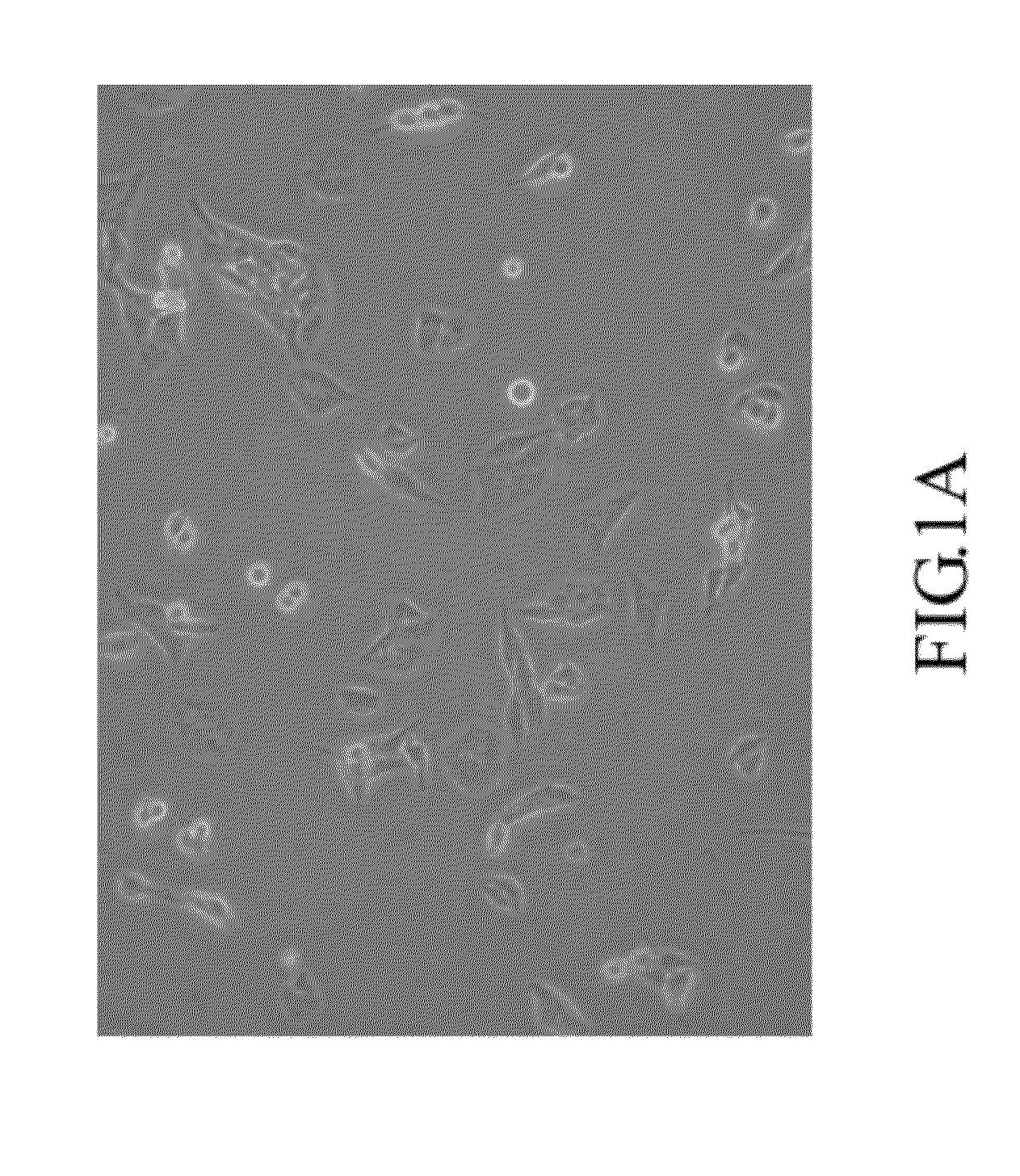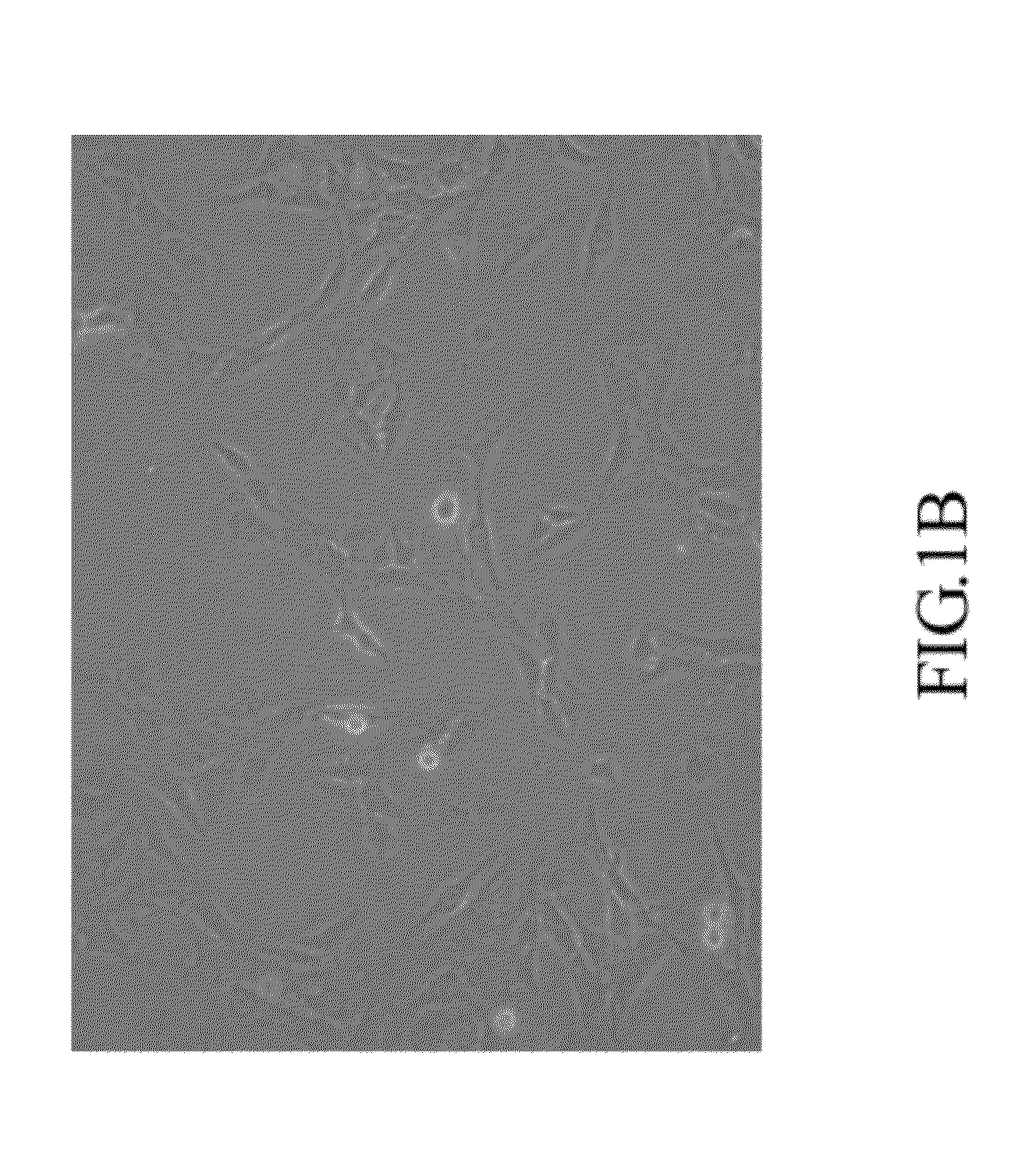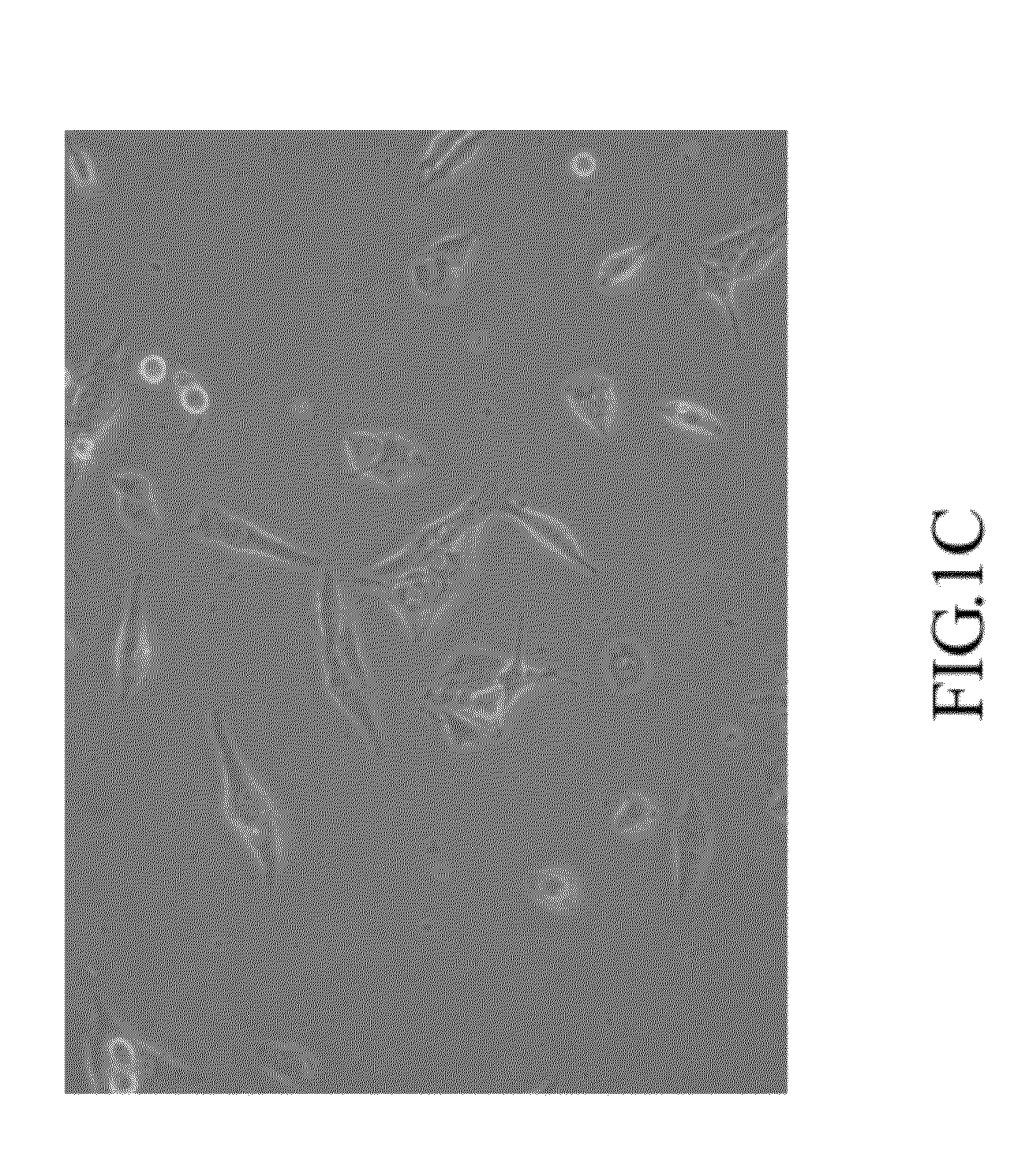Mammal dedicated cell line from human hepatocellular carcinoma cell
a hepatocellular carcinoma and dedicated cell technology, applied in artificial cell constructs, biochemistry apparatus and processes, instruments, etc., can solve the problems of low sensitivity, unsuitability for expression, and inability to use all light-emitting organisms
- Summary
- Abstract
- Description
- Claims
- Application Information
AI Technical Summary
Benefits of technology
Problems solved by technology
Method used
Image
Examples
embodiment i
Screening Hep G2 NF-κB / Luc Cell Line Highly Sensitive to TPA (12-O-tetradecanoylphorbol-13-acetate) and MTX (Methotrexate)
[0018]This embodiment is provided to understand inhibition of MTX on TPA-induced NF-κB activation in HepG2 NF-κB / Luc cell. First, HepG2 and HepG2 NF-κB / Luc cells (cell morphologies as shown in FIGS. 1A and 1B respectively) were inoculated in a 96-well plate at 5000 cells / 200 μl / well and cultured overnight, to attach the cells onto the plate, and then treated with different concentrations of TPA (20, and 100 ng / ml), MTX (10, 50, and 100 μg / ml) and combined TPA and MTX for 16 h and 24 h. Next, 150 μg / ml of luciferin was added into the 96-well plate, which was then placed into an incubator of 37° C. and cultured for 10 min. Then luminescence behavior was detected with a luminescence / fluorescence imaging system (Xenogen IVIS 100 optical imaging system), and stronger light indicates stronger luminescence behavior (the original luminescence pattern as shown inFIG. 2A),...
embodiment ii
Activity (131I-FIAU Uptake) Experiment of Successfully Transformed HepG2 NF-κB / Luc / sr39tk Cell
[0021]This experiment is provided to analyze uptake of 131I-FIAU drug by HepG2 NF-κB / Luc / sr39tk transformed cells. HepG2 NF-κB / Luc / sr39tk transformed cells were cultured overnight in a 6-well plate at 1×106 cells / well to attach the cells onto the plate. Then, 1 ml / well of labeled 131I-FIAU was added into the cells and reacted for 2 h, and then the cells was washed with ice-cold PBS to quench the drug reaction, and detected for radioactivity. FIG. 4 is uptake effect of 131I-FIAU in HepG2 NF-κB / Luc / sr39tk cell, in which X axis represents different transformed cell line; and Y axis is uptake amount of 131I-FIAU per 0.1 million cells. Results show that HepG2 and HepG2 NF-κB / Luc cells have very low uptake efficiency for 131I-FIAU, while among the co-transformed HepG2 NF-κB / Luc / sr39tk cells, 1—18 cell is most sensitive to 131I-FIAU (41.5±1.00%), followed by 1—34 (27.2±1.07%), 2—24 (22.9±0.68%), a...
PUM
| Property | Measurement | Unit |
|---|---|---|
| concentrations | aaaaa | aaaaa |
| concentrations | aaaaa | aaaaa |
| concentrations | aaaaa | aaaaa |
Abstract
Description
Claims
Application Information
 Login to View More
Login to View More - R&D
- Intellectual Property
- Life Sciences
- Materials
- Tech Scout
- Unparalleled Data Quality
- Higher Quality Content
- 60% Fewer Hallucinations
Browse by: Latest US Patents, China's latest patents, Technical Efficacy Thesaurus, Application Domain, Technology Topic, Popular Technical Reports.
© 2025 PatSnap. All rights reserved.Legal|Privacy policy|Modern Slavery Act Transparency Statement|Sitemap|About US| Contact US: help@patsnap.com



